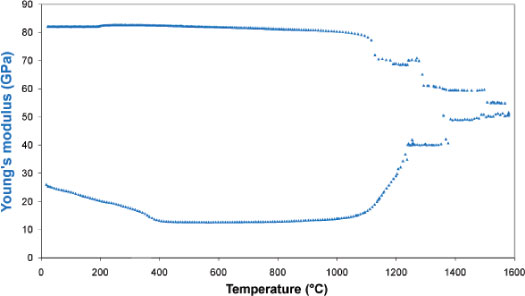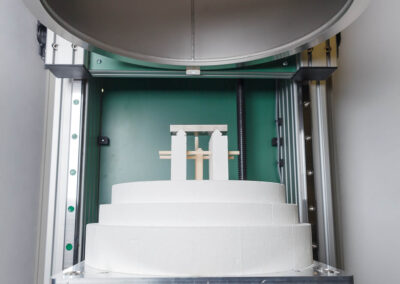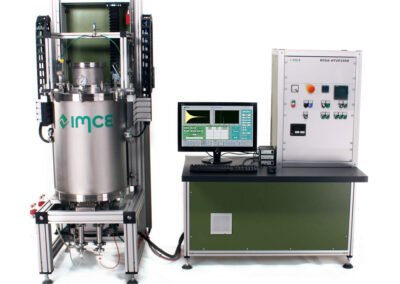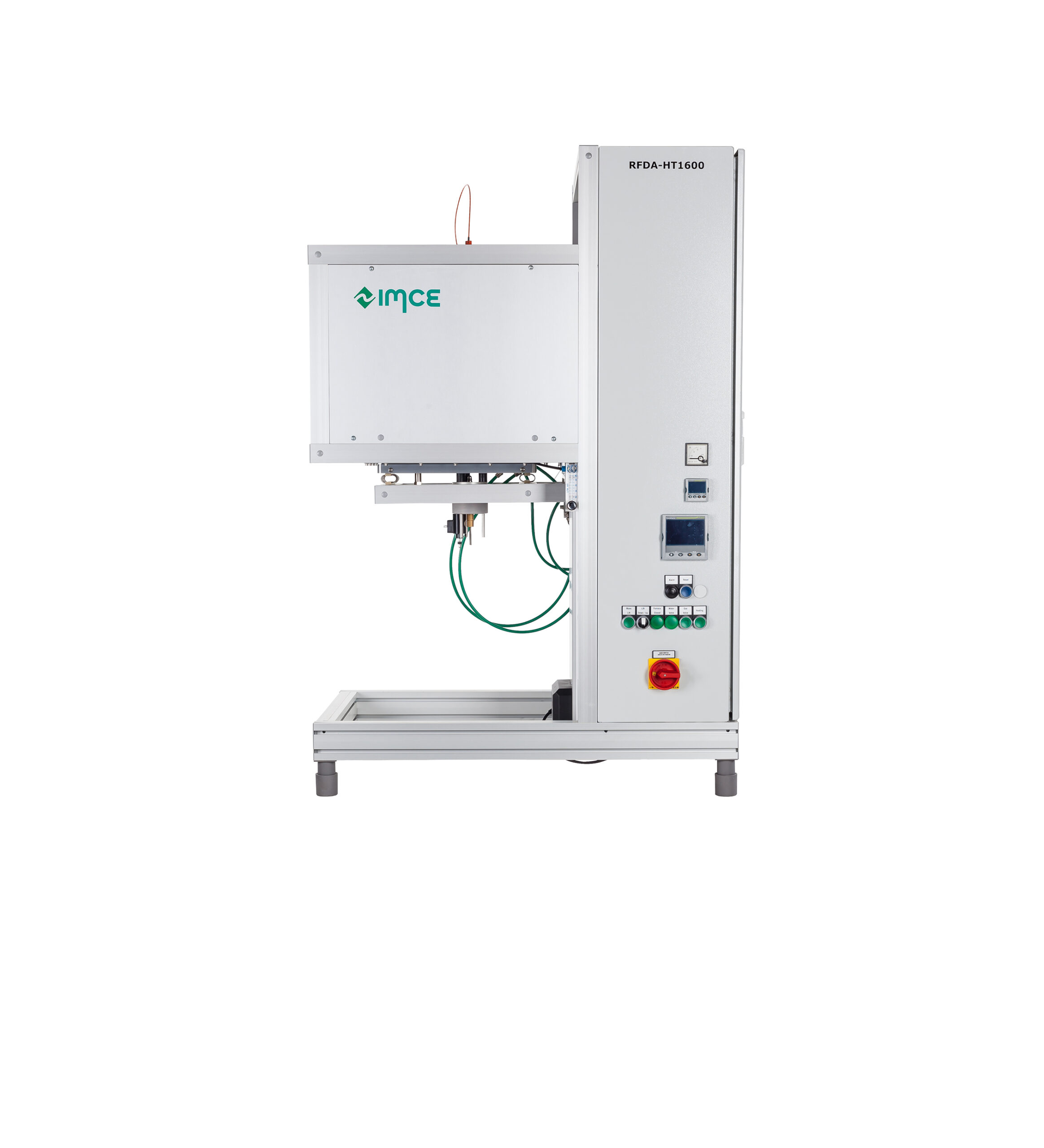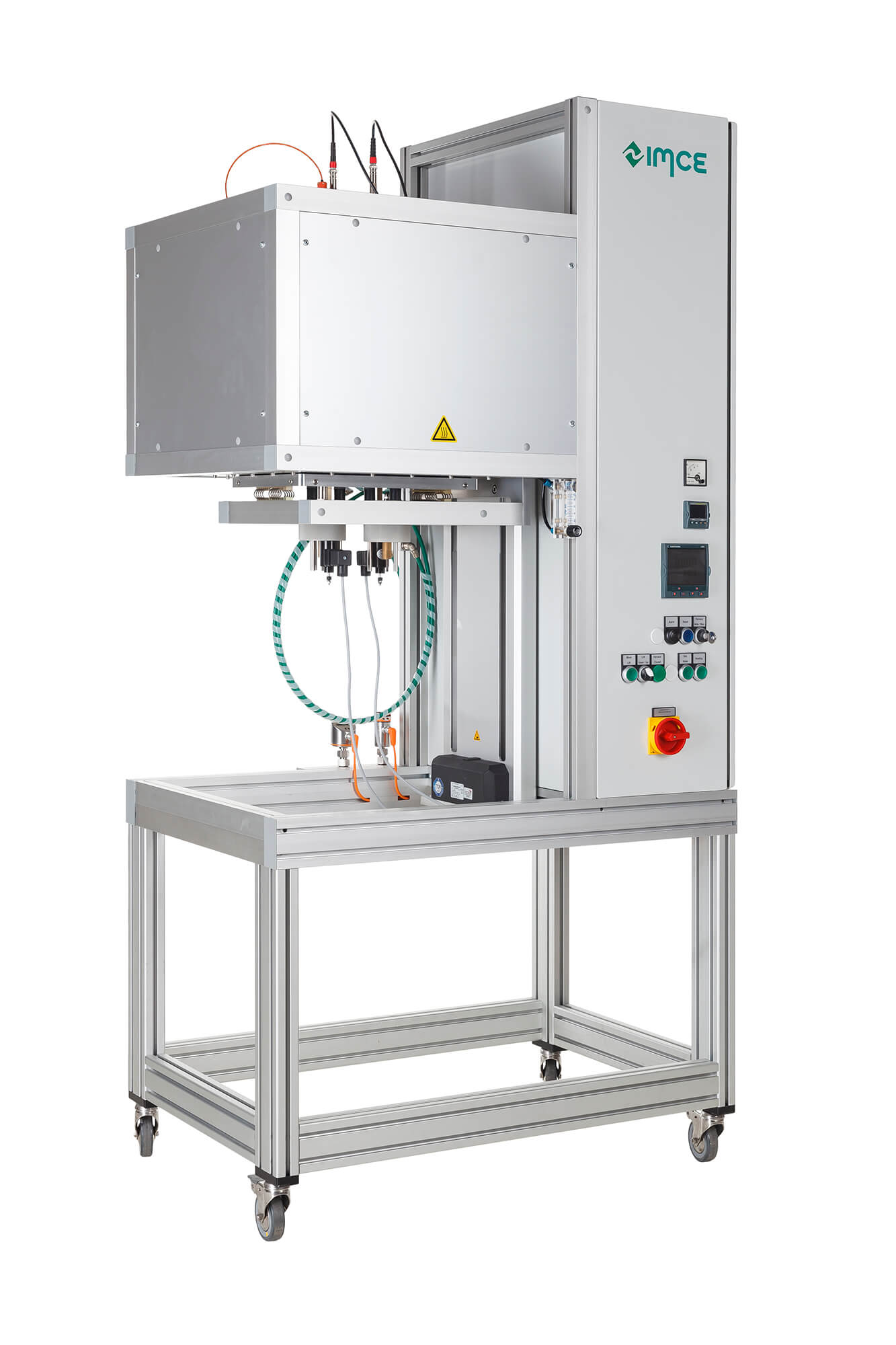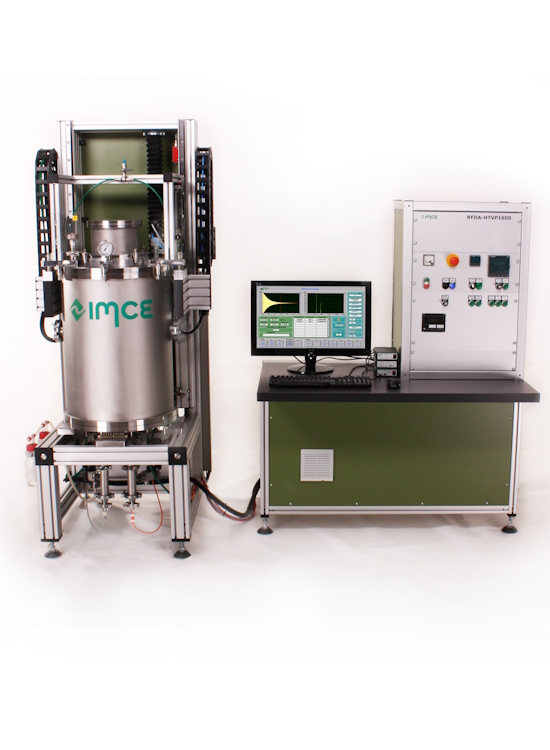RFDA HTVP1600
DESCRIPTION
The HTVP1600 furnace is designed to perform impulse excitation measurements at elevated temperatures up to 1600 °C in an air, inert or reducing atmosphere. Measurements can be performed in predefined intervals during heating and cooling (1-5 °C/min) in order to determine the elastic properties and damping as function of the temperature. The adjustable positioning of the excitation system and the top hat system guarantee an optimal sample configuration and manipulation.The HTVP1600 furnace is equipped with a rotary vane vacuum pump to perform measurements in a controlled atmosphere (air, inert, reducing, …).
| Internal dimensions of the furnace | Diameter: 170 mm Height: 180 mm |
| Temperature range | Room temperature – 1600 °C |
| Heating elements | MoSi2 heating elements (8 pieces) |
| Heating/cooling rate | 1 – 5 °C/min |
| Isolation material | Al2O3 (PCW) |
| Furnace wall cooling | Water jacket |
| Atmosphere | Air, inert or reduced |
| Vacuum pump | Rotary vane pump |
| Minimum pressure | 1 mbar |
| Furnace (sample) loading | Top hat |
| Number of samples | 1 |
| Max. length of sample | 120 mm |
| Positioning excitation system | adjustable |
| Positioning microphone | Fixed (3 positions) |
Want to know more about our equipment?
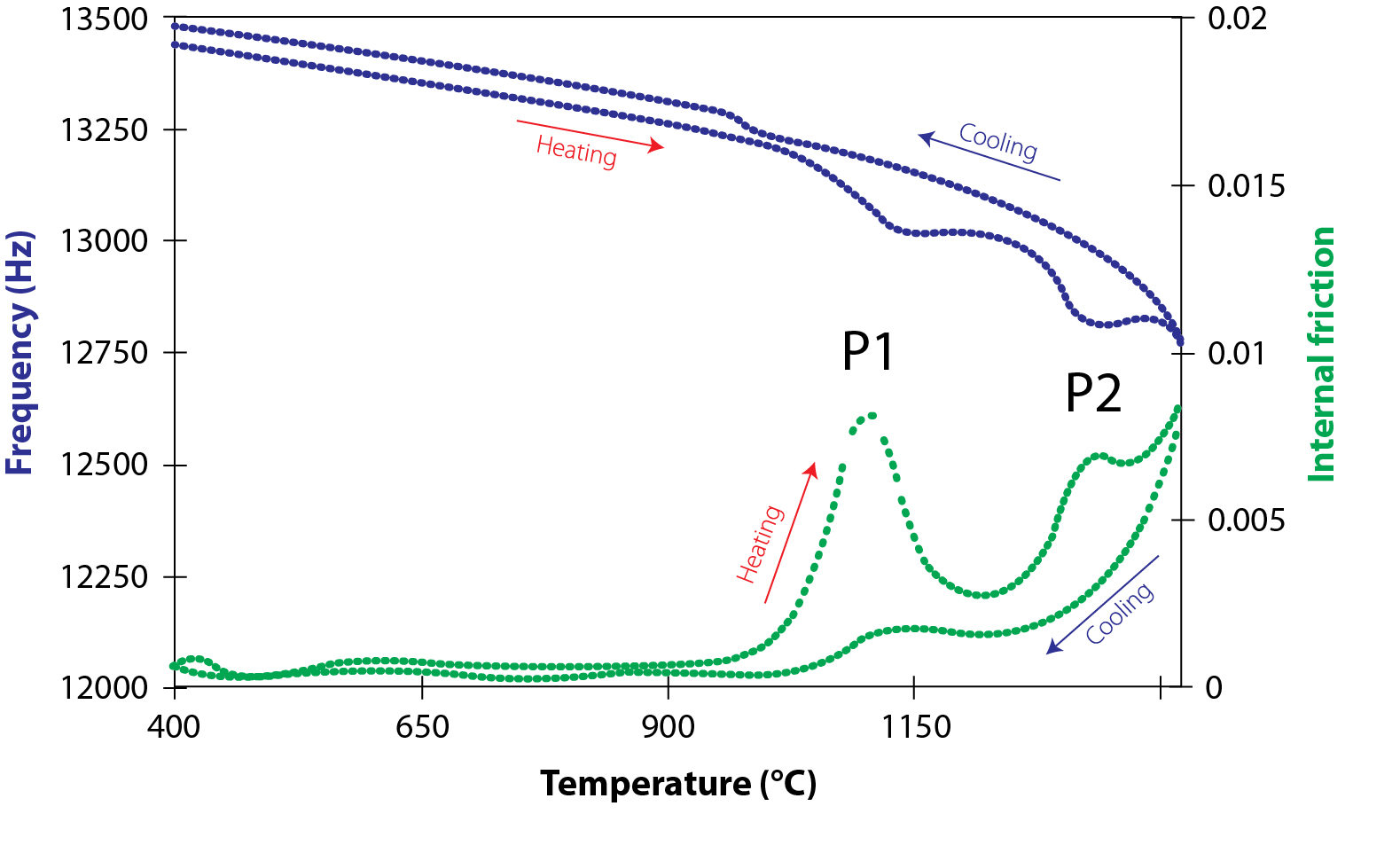
Measurement examples
Sintered silicon nitride is the leading ceramic for high load structural applications. The internal friction behavior can give information about the crystal structure together with the fatigue resistance. 2 internal friction peaks can be observed.
– P1: Si3N4 contains a secondary, intergranular phase. This phase is (partially) amorphous, and softens above its glass transition temperature (typically near 1000°C). This triggers viscous deformation of the bulk ceramic and consequently increases the internal friction. For cyclically loaded components operating near this peak, this energy dissipation constitutes an effective increase in fracture resistance.
– P2: Around 1300°C, a local increase in the resonant frequency can be observed which points to stiffening of the material. This stiffening is typically the consequence of crystallization which indicates that the second internal friction peak is caused by the crystallization of the amorphous intergranular phase. During cooling, when the crystallization is completed, the peak doesn’t return.
Refractory materials
Refractory materials must be chemically and physically stable at high temperatures. Especially for these porous materials, the impulse excitation technique can be successfully applied due to the small mechanical forces avoiding internal material deformations. The refractory sample is measured starting from the green stage up to 1550°C at 3 °C/min, stayed at 1550 °C for 30 minutes and cooled down at 3 °C/min. Measurements were taken every 2 minutes. The different phase transformations are clearly observed during the heating and cooling phase. Furthermore, the technique can also be used to study the thermal shock behavior of refractory materials.
